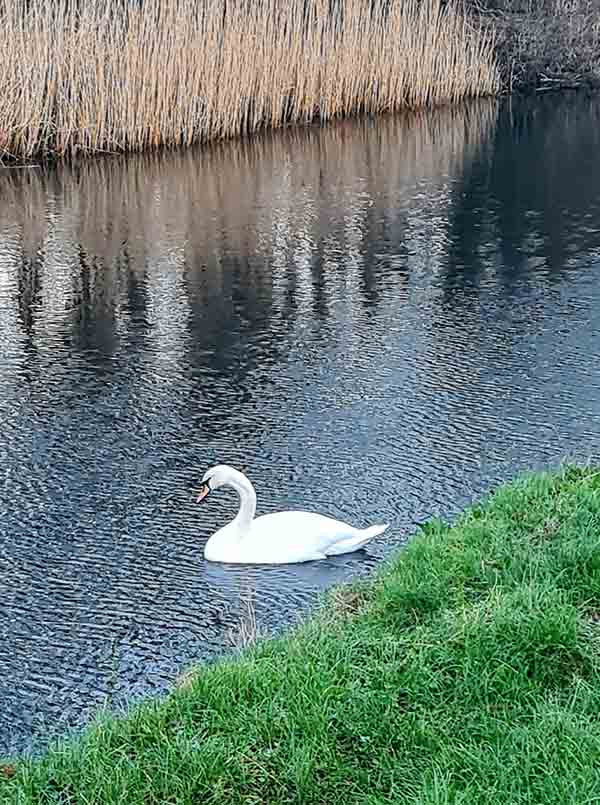Our Hidden Environmental Gems Need Protection Says Alliance Councillor Jill Truesdale
Mournes Alliance Councillor Jill Truesdale is bringing a motion to January’s full council in order to educate and raise awareness of trees and the role they play in all our lives across Newry Mourne and Down for residents and visitors.
The motion speaks to the vital role of trees in the fight against climate change and their value in enhancing the health and wellbeing of people and communities.
Cllr Truesdale said: “I want to actively support efforts to plant and protect the right trees in the right places and for the right reasons, ensuring that everyone can share in the benefits trees provide.”
The motion comes on the back of Alliance MLA Peter McReynolds Private Members Bill submitted at Stormont.
The proposal for a Tree Protection Bill, submitted in July, aims to introduce dedicated legal protection for Northern Ireland’s oldest and most significant trees was warmly welcomed by The Woodland Trust and others.
The Bill seeks to strengthen the protection provided through Tree Preservation Orders (TPOs), create a new ‘Heritage Tree’ designation specifically to protect and support Northern Ireland’s oldest and most significant trees, and safeguard these heritage trees – along with ancient and long-established woodland – from permitted developments.

Jill Truesdale said she was especially interested in the bill as she has long realised Islands Park and Castle Park in Newcastle need better protection, but they are also ideal places for educating people about their rich heritage of trees.
She added: “When the Shimna flood alleviation work took place we lost a large portion of ancient trees in Tipperary woods, and according to the environmental assessments at the time, this was to be mitigated by the replanting of Irish Native Oak in the area.
“Unfortunately, the replaced trees were Silver Birch, a species not favoured by the displaced bats. The planting of Silver Birch wasn’t noticed until the actual trees went in, and as I wasn’t elected at that point I enquired why this was happening and was told Native Irish Oak could not be sourced.
“Obviously had I been elected I would have been able to do more but I found it incredulous that Irish Oak could not have been sourced in Ireland.
“While Silver Birch is good for insects and butterflies as well as flood protection, we have displaced a valuable bat population and this could have been avoided with better tree protection.
“Some people might wonder why that matters, but put very simply,when you create imbalance in an ecosystem there will be consequences. A bats eats up to 3000 midges every night, and if like me you’d like a walk around the woods or park with a few less midges, then we need bats”.
Jill also outlined how she has requested NMANDD Biodiversity Officer to consider looking at a new initiative taken up by Belfast City Council to alleviate flooded paths on popular walking routes through nature-based concepts.
She said: “The paths in Island’s Park are well used by children going to school, dog walkers and mums and tots as they are safe, flat and in good condition, as well as being within a beautiful, peaceful park.
“I managed to get eco grids put in at the Bryansford Road entrance by showing this was a well-used path and short cut. Even though the flood alleviation works now save many homes from flooding the park now floods on a much more regular basis.
“Depending on the tide and rainfall there is little to be done until one or the other subsides, Jill said, however, it does seem to flood on the paths very easily outside of heavy rainfall and high tides.
The Belfast City Council looked at a path in Lower Botanic Gardens inaccessible after Storm Babet back in 2023, impacting pedestrians commuting to work as well as local school children.

To test nature-based solutions, they created species-rich grassland and what is known as ‘wetland scrapes’ between the east and west paths. Storm Bert in late November and Storm Darragh in early December provided the first real stress test.
In the face of the deluge, the new scrapes retained the water.
“Their work not only keeps paths accessible, but means the wetland can collect rain to create a better habitat for local wildlife” said Jill.
“The team also worked with the community to plant over 1,500 wetland species which will reveal a new beauty in 2025.
“Island’s Park is a hidden gem of a place, as everyday users will tell you. There is an array of birds, including Kingfishers, Herons, Dippers, Cormorants, the occasional otter and for the first time in decades, a swan.
“We must support this crucial ecosystem but not look upon it in isolation within the park because as the ecologlcal survey commissioned for the repair of the Shimna River retaining walls shows we are losing wildlife at an alarming rate.
“This coupled with the ongoing argument between Rivers and the Council over the collapsing weir is not something to be ignored and its certainly not something I intend to stop pursuing.
“We can see the area changing with the exposure and build up of silt beds in front of the library and under the Shimna bridge, this is to be expected as we have freshwater meeting salt, but it is something that can be mitigated against.
“Having spoken to the engineers within Rivers, I am in no doubt they are the ultimate experts in this but my concern is that council are refusing to step up to the mark as the riparian land owners.
“In an ideal world my wish would be for them to work together to repair the weir, the retaining walls and look to more nature-based solutions to benefit the health and well-being of the people who live and visit the area.
“I want to bring this motion to work and create better solutions and education and to highlight the many beautiful small parks throughout our district:
The Ecological Survey can be found on the Planning Portal under Planning Number:


























